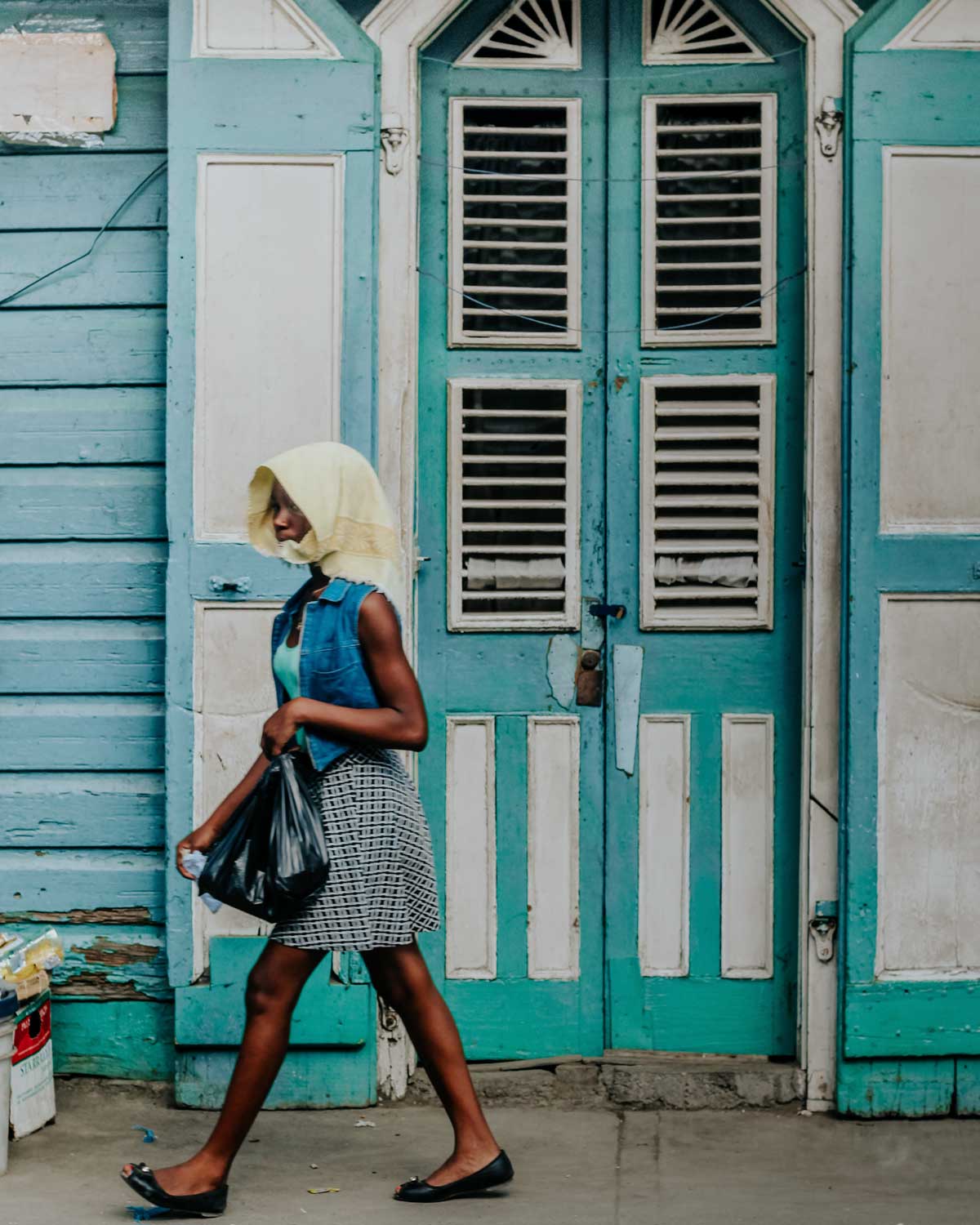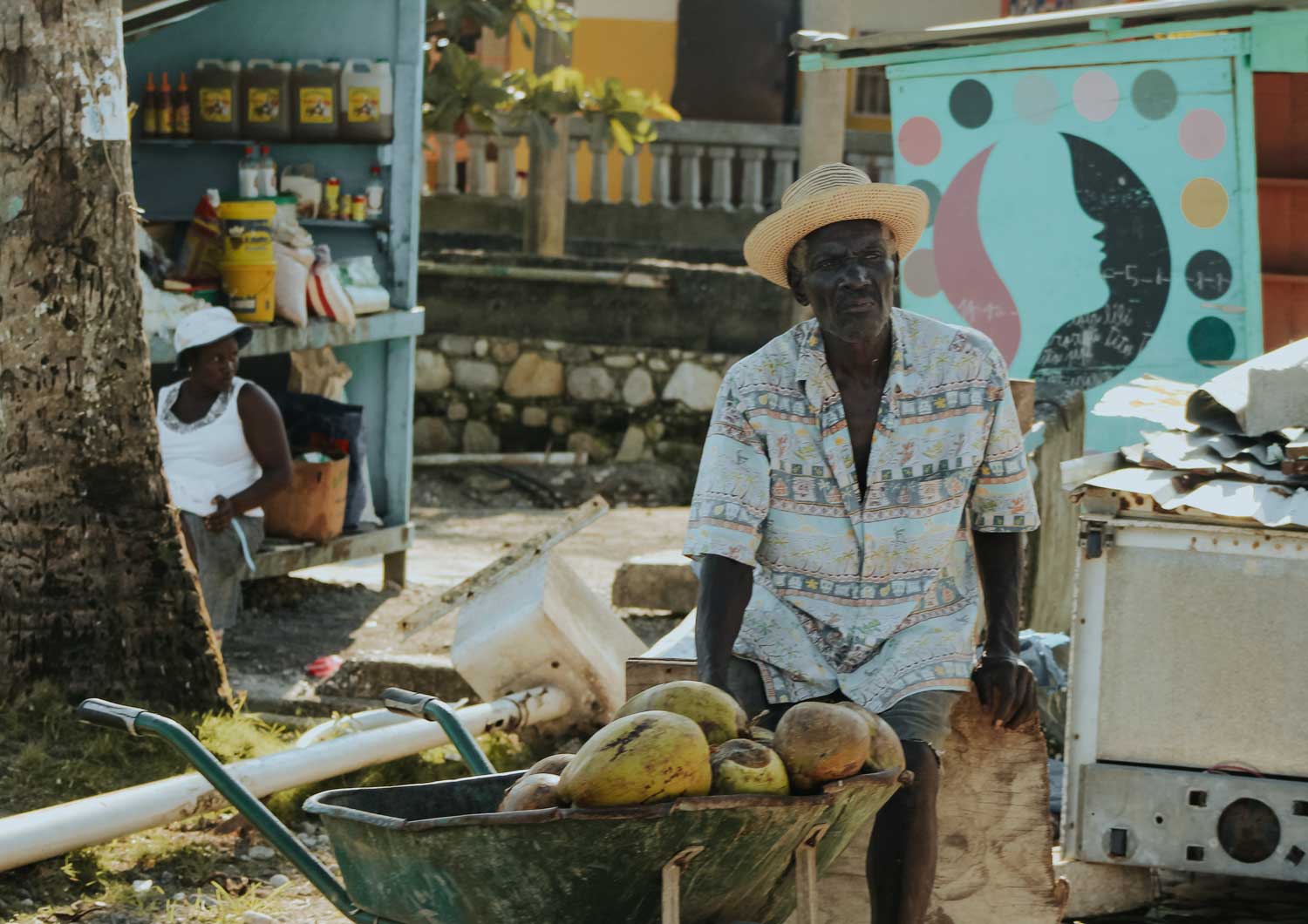
Photo: Mélissa Jeanty
Photo Journal: Saint-Marc
Tucked between the mountains along the Western coast in the Artibonite Department lies the port city of Saint-Marc, teeming with motorcycle taxis, market vendors, and traces of historical French architecture.
As is the case in all of Haiti’s cities, Saint-Marc is traffic-heavy. Motorcycles zoom between cars, tap-taps, and buses to get everyday customers to their destinations: some to school, some to work, some to wherever the next errand of the day is located.

Photo: Melissa Jeanty
The colors and tones of the everyday moving portraits of the streets find themselves in a lot of the locally-made art. Small scale models of tap-taps and buses can be purchased at local artisans’ shops to take home with you as a reminder of the island, each of them featuring one of the many phrases and isms that are so common on the sides of these vehicles.

Photo: Mélissa Jeanty
The accessibility of public transportation coupled with the fact that Saint-Marc is a port city, nestled right on the shoreline of Haiti means that there is widespread access to public beaches. The scenic views of the ocean lapping at the soft sand while palm trees sway above are enough to make anyone pull over for a cold Prestige with a view!

Photo: Mélissa Jeanty
If you are in town without a car, you’re in luck: tap-taps pass through Route Nationale 1 all day long, and can take you in either direction for a measly fare. This means that a determined visitor could organize to go to the beach and come back to the city center— all in a day. If you’ve heard fantastic tap-tap tales from your friends, be prepared to hear your own.

Photo: Mélissa Jeanty
Saint-Marc has the added charm of being a provincial city, as well. Visitors don’t need to go far after a beer if they would like to take a break from the city sights and sounds. Peaceful plains with gorgeous views on goats, cows, and horses grazing the fields are always a short while away.

Photo: Mélissa Jeanty
The city of Saint-Marc is extremely walkable and much safer, compared to Port-au-Prince. Colorful front doors and walls line the narrow streets filled with passersby. The experience of roaming its streets is comparable to walking through Panama’s Casco Viejo.

Photo: Mélissa Jeanty
Everything you need is exactly right where you need it, whether in the city center or on Route Nationale 1. If you’re thirsting for fresh coconut water, vendors have wheelbarrows filled with coconuts at the ready. Armed with machetes, they will be more than happy to chop one open for any customer.

Photo: Mélissa Jeanty
These same streets are home to remnants of French architecture on downtown Saint-Marc storefronts, weathered by years of resilience. Predating Haiti’s independence in 1804, the country’s architectural history is still markedly present in many of its cities.

Photo: Mélissa Jeanty
Much of Haiti’s workforce is guided not by the time on a clock but by the rhythm and movement of the elements around them. Most are up before sunrise, and many stay out to work just until after sundown. Resilience has become one of the Haitian people’s trademark character traits, and even the smallest parts of their day are representative of that.

Photo: Mélissa Jeanty
After all, isn’t that what keeps us all going? The will to stick to a plan just another day, another month, or another year. Haitians have long ago learned that motivation alone won’t get them far; the discipline to be consistent, to put in the same effort every day, is what gets you some place— and every day, you pledge to do better.

Photo: Mélissa Jeanty
Explore Haiti’s Art & Culture

Paradise for your inbox
Your monthly ticket to Haiti awaits! Get first-hand travel tips, the latest news, and inspiring stories delivered straight to your inbox—no spam, just paradise.


